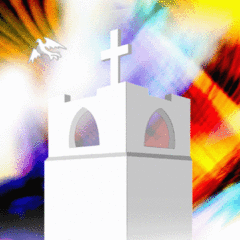Each year on Reformation Sunday, which is always the last Sunday in October, we commemorate the great Protestant Reformation that took place during the period of transition from the late Medieval timeframe into the Renaissance timeframe. For Lutherans and Catholics, this commemoration is marked both by sorrow for past sins against one another and by deep gratitude for the spiritual gifts we now offer to one another through Christ our Lord and Savior.
As we are reformational Lutheran Christians of the 21st Century (now over two decades into the Third Millennium of Christ’s Redemption), I offer you the following couple areas of reformational do’s and don’ts:
DO’S & DON’TS FOR INTERFAITH RELATIONS…
DO… Let us regard all people as fellow children of God, made in the spiritual image of God. While we profess that Jesus (Yeshua in Hebrew) is the fullest revelation and manifestation of God, we must also be sure to look for and celebrate the Spirit of our Lord Jesus within non-Christian faiths. Even as we proclaim that Jesus is the Eternal Word of God incarnate in human flesh (John 1), we must also be sure to seek to recognize the ‘Seeds of the Word’ (Semina Verbi in Latin) that are scattered throughout the world. In other words, as I often like to say, while Jesus is the “full enchilada” of the revelation of God, there are also slices of this Divine “enchilada” within other faiths as well.
DON’T… When it comes to interfaith relations, it’s a temptation to downplay our Christian theology and spirituality in order to be hospitable and friendly. It’s tempting to say that all roads to God are equal. However, we cannot do this if we are to remain faithful to the grace and truth of Jesus Christ.
The big question is, “Will the real Jesus please stand up?” Well, the answer for some people is that Jesus is a prophet, and for some he is a buddha, and for some others he is a rabbi or a guru. However, the plain historical truth is that the people who know Jesus best are the people of the living community that he and his Apostles founded, which is the Church of Jesus Christ. So for those who know him best — that is, for Christians — Jesus is much more than everything these various titles convey. For us Christians, Jesus is the Son of God and the Second Person of the Holy Trinity (the Father and the Son and the Holy Spirit). For us, Jesus is the Divine Messiah who is the Supreme Prophet, the Heavenly High Priest, the Prince of Peace, and the Everlasting King of Kings. For us, Jesus isn’t merely Prophet Jesus, but rather he is LORD Jesus. Consequently, we can be understanding and respectful of other religions while at the same time we can hold firm to our confession of our Trinitarian Christian faith and spirituality.
DO’S & DON’TS FOR CHRISTIAN CHURCH RELATIONS…
DO… Let us start all interactions with Christians of different branches of the Church from a position of UNITY IN DIVERSITY. So much more unites us than differentiates us as fellow brothers and sisters in the Body of Christ, the Christian Church. We share the same foundational, central and essential confession that Jesus the Christ (Yeshua Ha-Mashiach) is Lord and Savior, just as we have received from the very beginning at the Annunciation to Mary:
The angel said to Mary, “The Holy Spirit will come upon you, and the power of the Most High will overshadow you. So the holy one to be born will be called the Son of God.”
(Luke 1:35)
We share in the same baptismal grace and faith, and we share in the same resurrection hope and charitable love of our Lord Jesus.
DON’T… We must never see other branches of the Christian Church as alien to our own identity in Christ Jesus. For we are ONE BODY in Christ with many uniquely gifted members by the power of the Holy Spirit. We are ONE TREE in Christ, with many uniquely gifted branches reaching out in all directions — Protestant, Catholic, Orthodox, and so on.
Together in Christ, Pastor Tim
